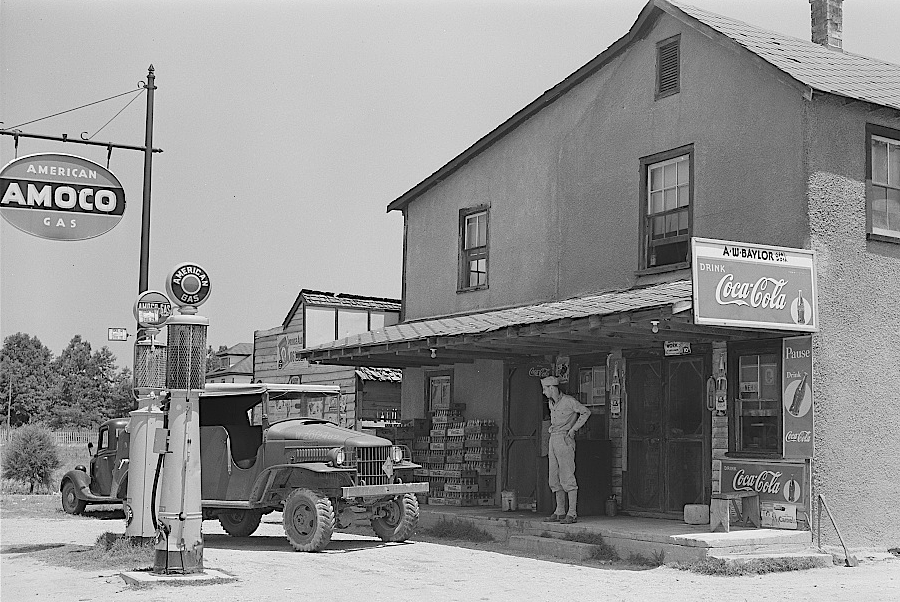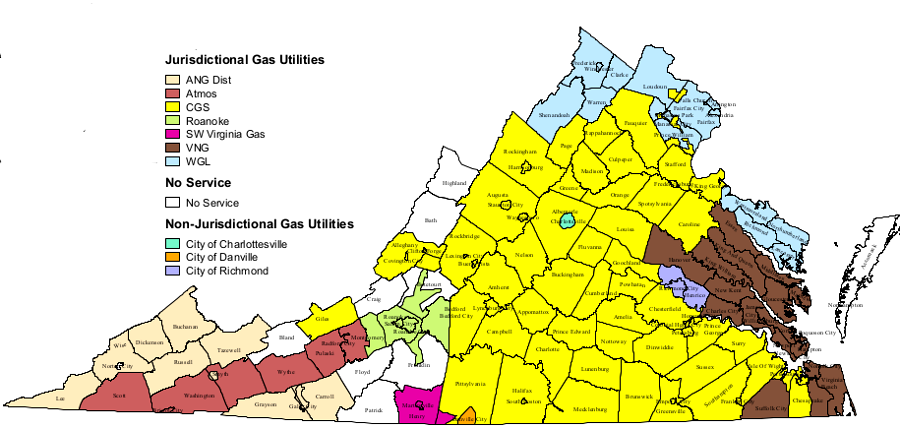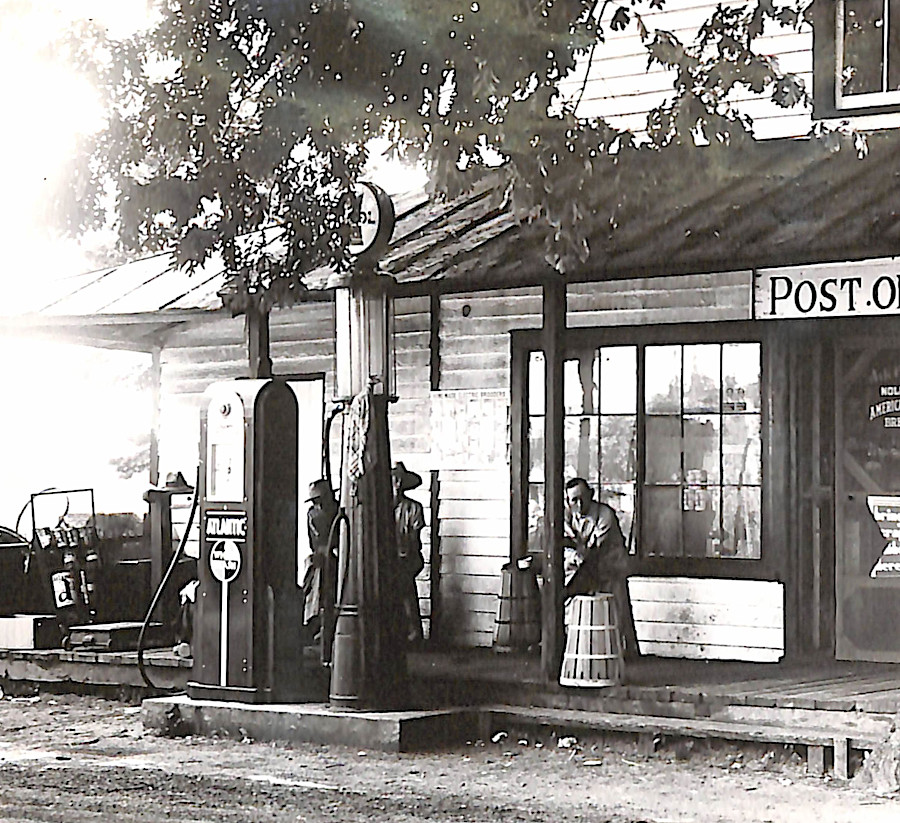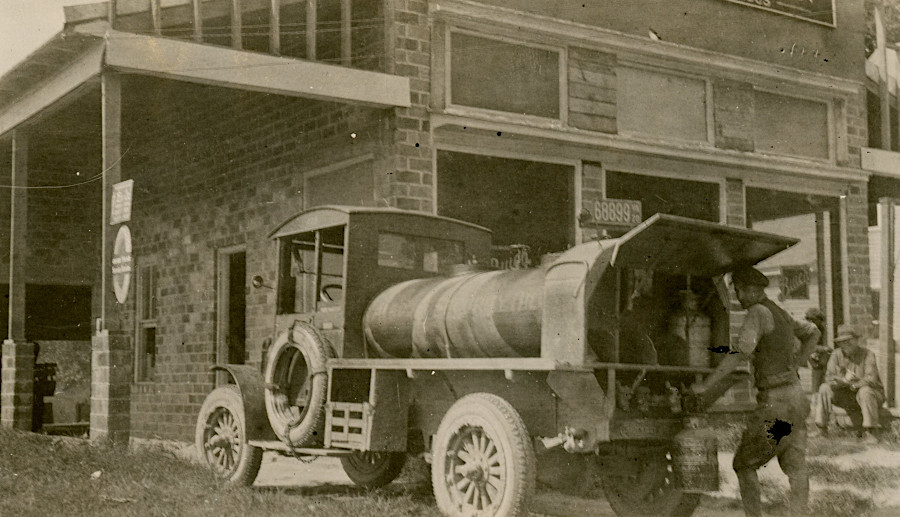
gas pumps have evolved since 1941
Source: Library of Congress, This small store, owned by two Negroes for about forty years, is getting a last rush of business

gas pumps have evolved since 1941
Source: Library of Congress, This small store, owned by two Negroes for about forty years, is getting a last rush of business
The Virginia Energy Overview noted in 2004:1
Virginia produces some natural gas from fields in the southwestern part of the state, plus methane from coal beds. In the very long term, reservoirs of natural gas in the Atlantic Ocean - perhaps even methane hydrates - may be discovered and developed, resulting in natural gas being piped onshore.

the State Corporation Commission gives natural gas suppliers in Virginia a monopoly to service specific areas, avoiding the cost to build duplicate pipelines to homes
Source: State Corporation Commission
Production of coal bed methane from the Appalachian coal fields is increasing. Use of coal to generate methane is not new to Virginia. Starting in the 1840's, natural gas was generated from coal by the Petersburg and Hopewell Gas Co. to fuel the gas lights in the city.
Virginia consumes far more natural gas than it produces, so the state imports the gas through pipelines from the Gulf of Mexico region, Ohio/West Virginia, and even from overseas through the Cove Point liquefied natural gas (LNG) port in Maryland.
The surge of projects to build power plants to serve Northern Virginia is shaped by the location of natural gas pipelines. Most projects are just outside the edge of the non-attainment zone for air quality, in places like Remington (Fauquier County).
Dominion Energy did add 400 megawatts to the generating capacity at its Possum Point plant in Prince William County. By converting from coal to natural gas, the utility reduced air pollution as it increased capacity at Possum Point. The gas is supplied by the pipeline running along the Piedmont from the Gulf Coast, and from the Cove Point facility (depending upon the price).

gasoline stations replaced stables after cars replaced horse-drawn wagons
Source: National Archives, Gasoline Filling Station at Country Store at Goldvein, Virginia (1942)

the "last mile" of gasoline delivery to service stations requires trucks, not pipelines
Source: National Archives, Standard Oil Trucks (1920)